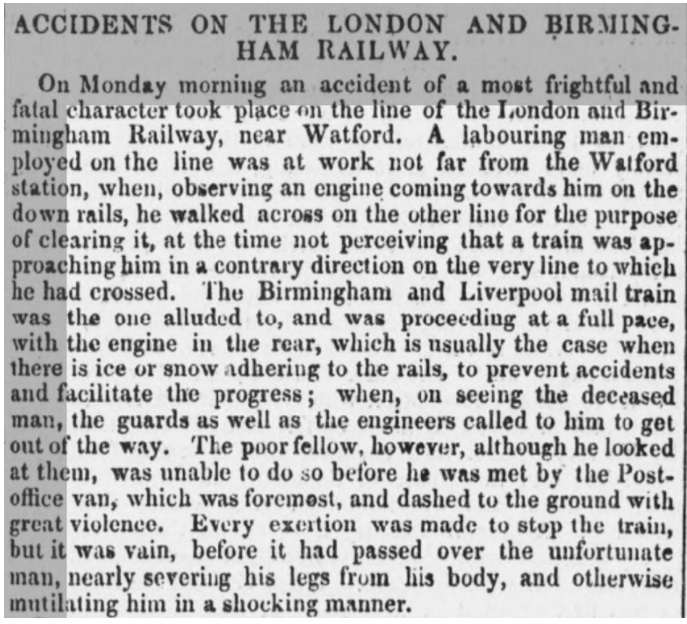Locomotives
The best source on the London & Birmingham locomotives and far better than we could do service to here is Harry Jack’s book on the LNWR locomotives of the Southern Division. In fact to give the locomotives context Harry Jack has included the most detailed chapters on London & Birmingham railway history than anything written under that title.
In short, and vaulting over the really interesting variety of locomotives that are categorised as constructors locomotives, London & Birmingham locomotives were essentially a fleet of Edward Bury 2-2-0s and 0-4-0s. At the time of the London & Birmingham opening these Bury locomotives were a well-respected alternative to the Stephenson camp. I wonder if the crank issues of the patentee type locos on the Grand Junction in 1836 contributed to this or whether problems of R. Stephenson & Co. managing to meet demand, someone better informed might be able to say. Many lines, in the Midlands and East, and further afield, including France, opened with these now seen as diminutive locomotives. The locos were reliable and well built, if lacking in their tractive effort compared to bigger engines.
In some ways similar to the Midland small locomotives policy later in the century and the modern use of American Diesel units, for example, the Edward Bury approach was very much was to use his locomotive as a unit. Need more power add a loco.
Particular issues with the London & Birmingham was the incline, while there were stationary engines and after. The London & Birmingham used piloting on Camden Bank but banking at other points on the line.
Again, read Harry Jack’s book for some excellent sourcing and detail. Here are some extra details however and unusual bits!
From the beginning of railways observers had struggled to describe the technology. The terminology was often mis-described or some terms inappropriately applied. The word ‘propelled’ is one such word. To cite a correct description, the Directors of the Liverpool & Manchester Railway, stated that trains were either ‘drawn’, loco at the front, or ‘propelled’, loco at the rear, although in April 1830 they weren’t sure which was best. However that discussion developed the result was that locomotives ‘drew’ their trains and everybody else followed (sorry couldn’t resist that).
However the term ‘propelled’ continued to be used to describe locomotives hauled trains confusing whether they were ‘drawn’ or ‘propelled’. In almost all cases in the early period, where the word ‘propelled’ is used, the train is actually ‘drawn’. Of course some trains were still pulled by horses on a number of railways and plateways lines across the country at the time.
I now come to February 1839[1] it seems, for a period that I can’t find any evidence in the minutes the London & Birmingham did in fact under certain circumstances operate locomotive propelling of trains. In what appears to be an extraordinary arrangement it seems the carriages of the train were thought to clear snow and ice from the rails so that the locomotive at the rear had greater grip.
I wonder if the this incident and perhaps other similar unrecorded incidents resulted in the an abandonment of the practice? Certainly denying the loco crew sight of the road ahead and not having a means of communicating with the guards especially in poor weather conditions, this would have been a hazardous situation under any circumstances and I can’t imagine that it was practiced for long.
[1] The Champion - Sunday 24 February 1839 and London Evening Standard - Tuesday 19 February 1839


